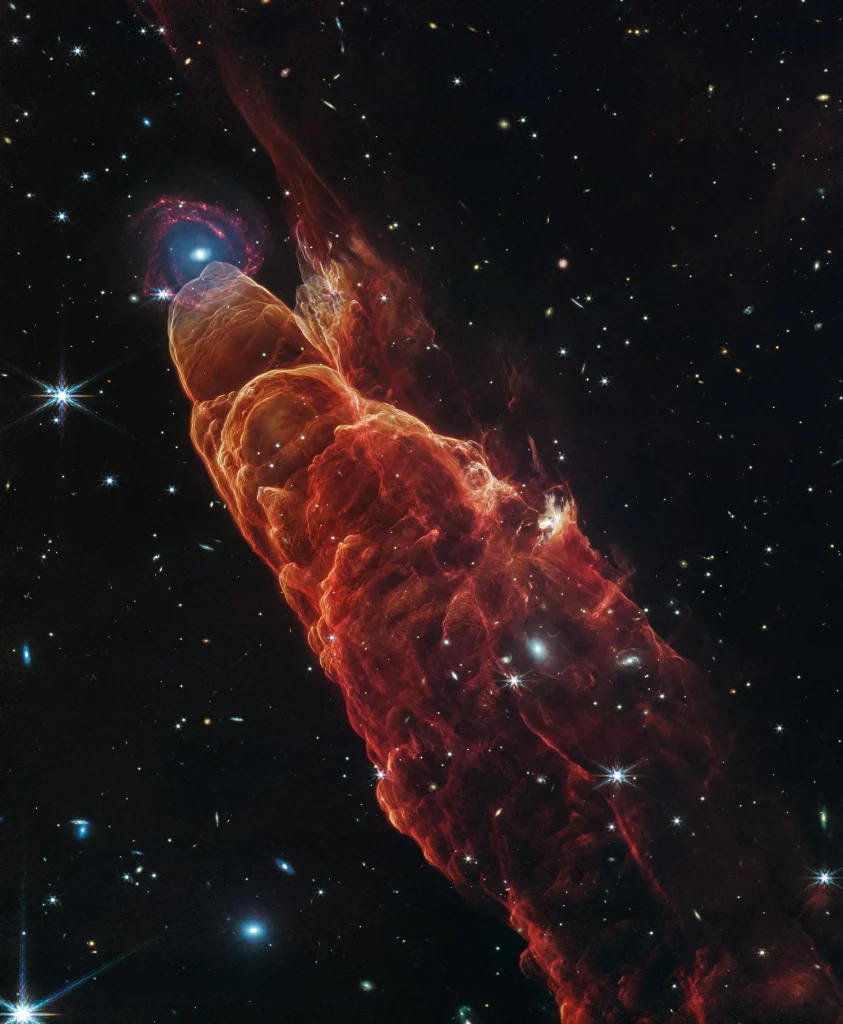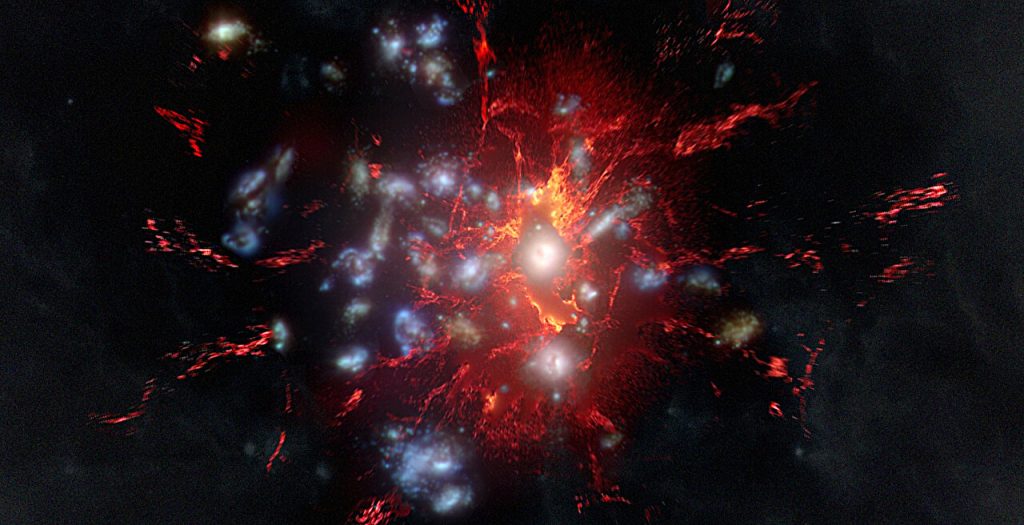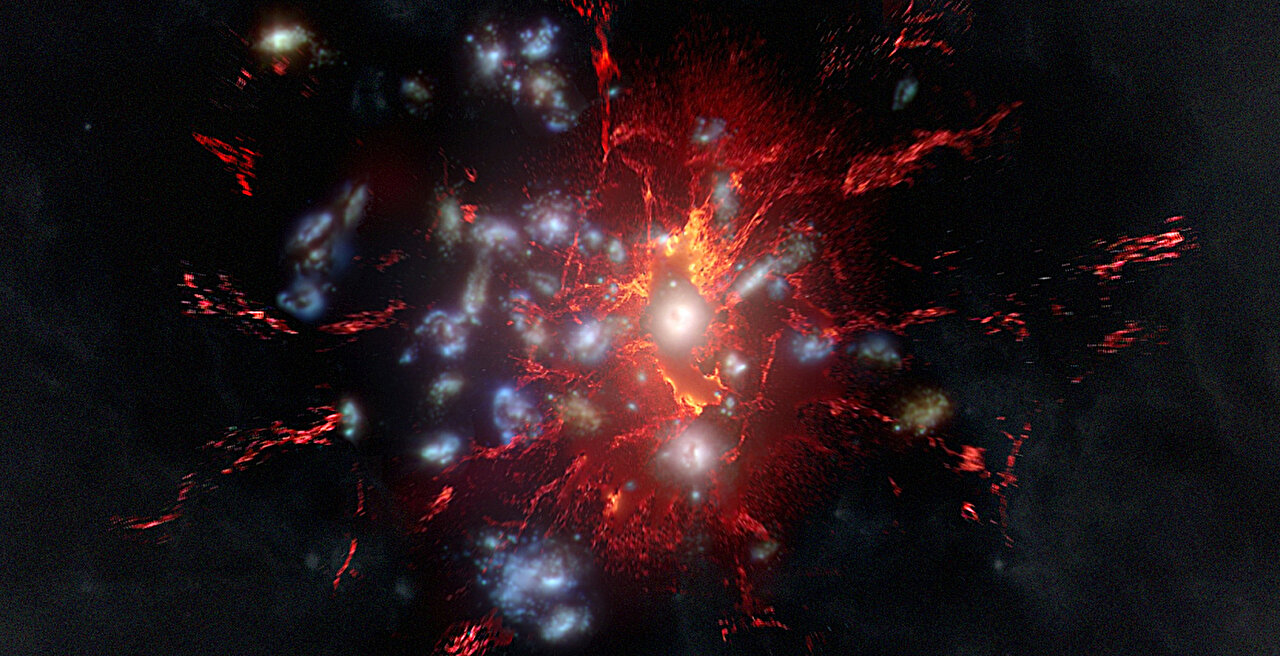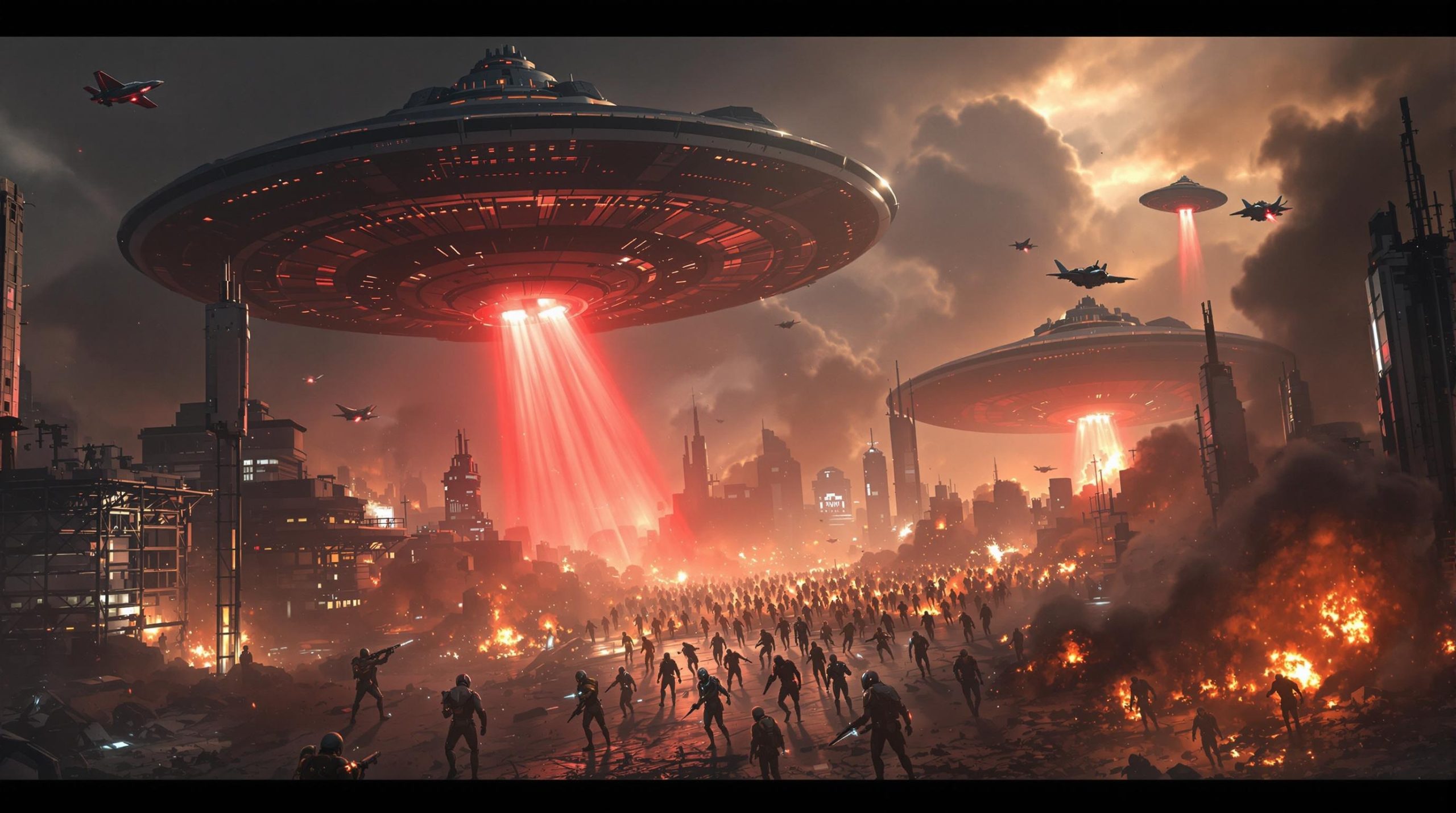or centuries, humanity has gazed into the night sky, asking one haunting question: how will the universe end? Will it collapse into itself? Rip apart at the seams? Or… is there a hidden cosmic force silently at work, preventing total destruction?
At Spaceyv, we dive into the mysterious forces shaping our cosmos. And in this article, we’re exploring one of the most fascinating possibilities in modern astrophysics — that something unknown and cosmic might be holding the fabric of the universe together.
The End of the Universe: What Science Currently Predicts
Before we dive into the idea of a hidden cosmic protector, let’s understand what current science says about the possible end of everything:
-
The Big Freeze: The universe continues expanding until galaxies drift so far apart that stars die out, and everything becomes cold and dark.
-
The Big Crunch: Gravity eventually wins, pulling everything back together into a massive collapse.
-
The Big Rip: Dark energy keeps expanding space so violently that atoms themselves are torn apart.
All three are bleak. Yet, they are based on what we currently know — or think we know — about physics. Could there be an unknown factor we haven’t considered?

Enter the Hidden Cosmic Force
The term hidden cosmic force refers to theoretical elements or energies in the universe that have not yet been detected or explained by current science, but which might play a key role in maintaining cosmic balance.
These could include:
-
Dark Energy – While it makes up 68% of the universe, we still don’t know what it is. Could it be a stabilizing force rather than a destructive one?
-
Modified Gravity – Some physicists propose that our understanding of gravity is incomplete. Alternative theories like MOND (Modified Newtonian Dynamics) suggest gravity could behave differently on cosmic scales.
-
Quantum Fields – What if there are unknown quantum fields affecting the expansion or structure of space-time?
Hidden Cosmic Energy: The Balancer of Opposites?
Some researchers believe that the universe has a kind of “cosmic thermostat” — when things get too chaotic, an unknown force intervenes. Think of it as cosmic homeostasis.
The Cosmic Coincidences:
-
The Perfect Balance of Matter and Antimatter: Why didn’t they cancel each other out completely after the Big Bang?
-
The Cosmological Constant Problem: The amount of dark energy observed is vastly smaller than predicted by quantum field theory — why?
-
Flatness of the Universe: The universe appears to be geometrically flat, which would require an extremely precise early balance of density and expansion.
Are these coincidences… or signs of a hidden cosmic fine-tuner?
Ancient Beliefs and the Hidden Forces of the Cosmos
Long before telescopes or quantum theories, ancient civilizations looked up at the night sky and felt — there must be something greater at work. Their stories, myths, and philosophies were often built around the idea of invisible forces guiding the universe. Today, while the language has changed, that sense of wonder persists in our search for dark matter, energy, and the origin of cosmic balance.
Here’s how some ancient traditions viewed these unseen cosmic forces:
1. Taoism (China): The Tao
-
The Tao (道) means “The Way” — a fundamental force that flows through all life and the cosmos.
-
It is formless, invisible, and eternal, yet responsible for all movement and balance in nature.
-
Taoists believe harmony with the Tao is the path to balance, just as the universe moves in dynamic equilibrium.
🧠 Modern parallel: The Tao resembles ideas in quantum physics or string theory — a hidden force or field that underlies all reality.
🌀 2. Hinduism: Brahman and the Cosmic Dance
-
Brahman is the ultimate, unchanging reality — the invisible cosmic spirit from which all matter emerges.
-
The god Shiva performs the Tandava, the Cosmic Dance, symbolizing creation, preservation, and destruction — eternal cycles of the universe.
-
Everything, including time, space, and consciousness, is a part of Brahman.
🧠 Modern parallel: Concepts like cyclical universes (Big Bang, Big Crunch) echo the Hindu understanding of time as non-linear and eternal.
🔥 3. Zoroastrianism (Persia): Cosmic Dualism
-
This ancient Iranian religion speaks of Ahura Mazda (good force) and Angra Mainyu (destructive force) — constantly at war.
-
The world is a battleground between light and darkness, order and chaos.
🧠 Modern parallel: This duality reflects modern debates on entropy vs. structure, or dark energy tearing the universe apart while gravity holds it together.
🌍 4. Greek Philosophy: Logos and the Harmony of the Spheres
-
The Stoics believed in Logos, a divine rational principle that ordered the cosmos.
-
Pythagoras proposed that planets and stars moved according to mathematical harmonies, called the Music of the Spheres.
🧠 Modern parallel: This sounds strikingly similar to string theory, which proposes the universe is made up of vibrating strings, like a cosmic symphony.
🌟 5. Kabbalah (Jewish Mysticism): The Ein Sof and the Sefirot
-
Ein Sof is the infinite, unknowable source of all creation in Kabbalistic thought.
-
It expresses itself through the Sefirot — 10 emanations or “vessels” of divine energy that maintain balance in the universe.
🧠 Modern parallel: This structure of layered energy echoes the idea of quantum fields or hidden dimensions in physics.
✨ 6. Indigenous Cosmologies: Spirits and Cosmic Balance
-
Native American, Aboriginal, and other indigenous cultures often describe spiritual forces that animate stars, planets, and nature.
-
The universe is seen as alive and interconnected, with humans playing a part in cosmic balance.
🧠 Modern parallel: The concept of panpsychism — that consciousness might be a universal property — is gaining attention in modern philosophy and science.
So… Was It All Metaphor, or Did They Sense Something Real?
Ancient cultures didn’t have telescopes or particle accelerators, but they had a deep, intuitive sense that the universe wasn’t just random chaos. They believed in hidden orders, cosmic rhythms, and forces beyond human comprehension.
And maybe… they were onto something.
Modern cosmology is just beginning to explore forces like dark energy, dark matter, and quantum fluctuations — all invisible, all mysterious, and all possibly part of a much bigger picture than we currently understand.

Could the Hidden Cosmic Force Be Conscious?
This question lies more in the realm of speculation and philosophy, but some physicists and thinkers wonder: if the universe seems fine-tuned, could it be intentional?
-
The Anthropic Principle suggests the universe appears the way it does because it’s the only way conscious life (like us) could observe it.
-
Some theories propose panpsychism — the idea that consciousness is a fundamental part of the universe.
At Spaceyv, we don’t claim to have the answers — but we believe it’s worth asking the bold questions.
The Future of Science: Are We Close to Discovering the Hidden Cosmic Force?
Modern physics is pushing boundaries every day:
-
The James Webb Space Telescope is already challenging our understanding of galaxy formation.
-
CERN continues to hunt for undiscovered particles that may explain dark matter and dark energy.
-
Projects like Euclid (ESA) and LSST (Vera C. Rubin Observatory) aim to map dark energy and the large-scale structure of the universe.
Perhaps, within our lifetime, we’ll find evidence of the hidden cosmic force — and finally understand the fate of our universe.

Conclusion: The Universe May Not Be Alone in Its Journey
While mainstream science paints several bleak endings for our universe, the presence of unexplained phenomena — dark energy, cosmic coincidences, and quantum oddities — leaves the door open to a more hopeful possibility.
Maybe something unseen, a hidden cosmic hand, is at work. And maybe, just maybe, that force is ensuring the universe doesn’t destroy itself too soon.
At Spaceyv, we remain curious, humbled, and inspired by the mysteries of the cosmos.
References:
-
Carroll, Sean. The Big Picture: On the Origins of Life, Meaning, and the Universe Itself. Dutton, 2016.
-
NASA. “Dark Energy, Dark Matter.” https://science.nasa.gov
-
European Space Agency – Euclid Mission: https://www.esa.int
-
Scientific American. “The Flatness Problem and Inflation.” https://www.scientificamerican.com
-
Greene, Brian. The Fabric of the Cosmos. Vintage, 2005.



